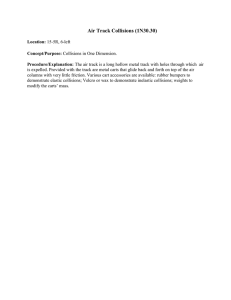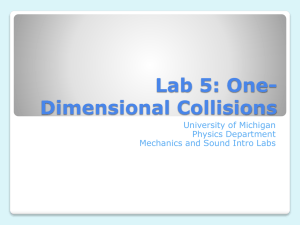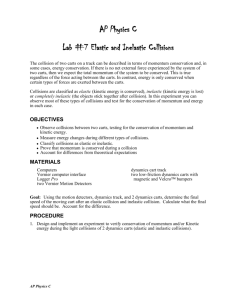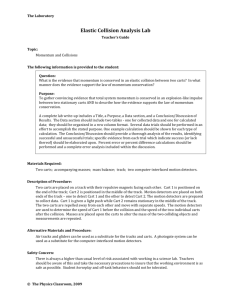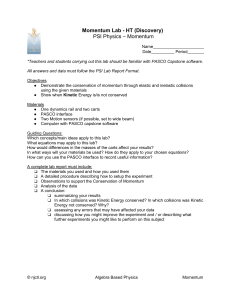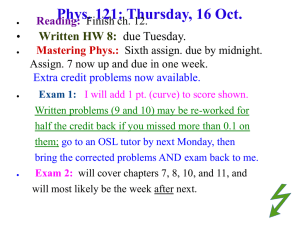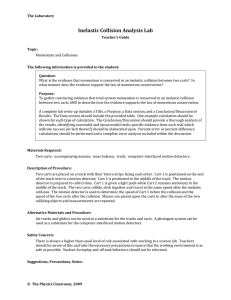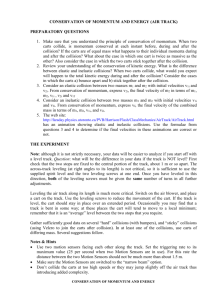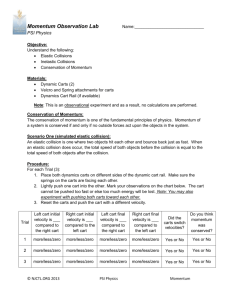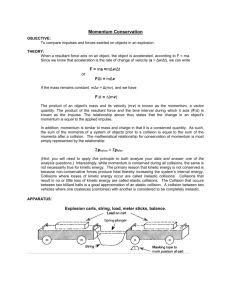MS Word
advertisement
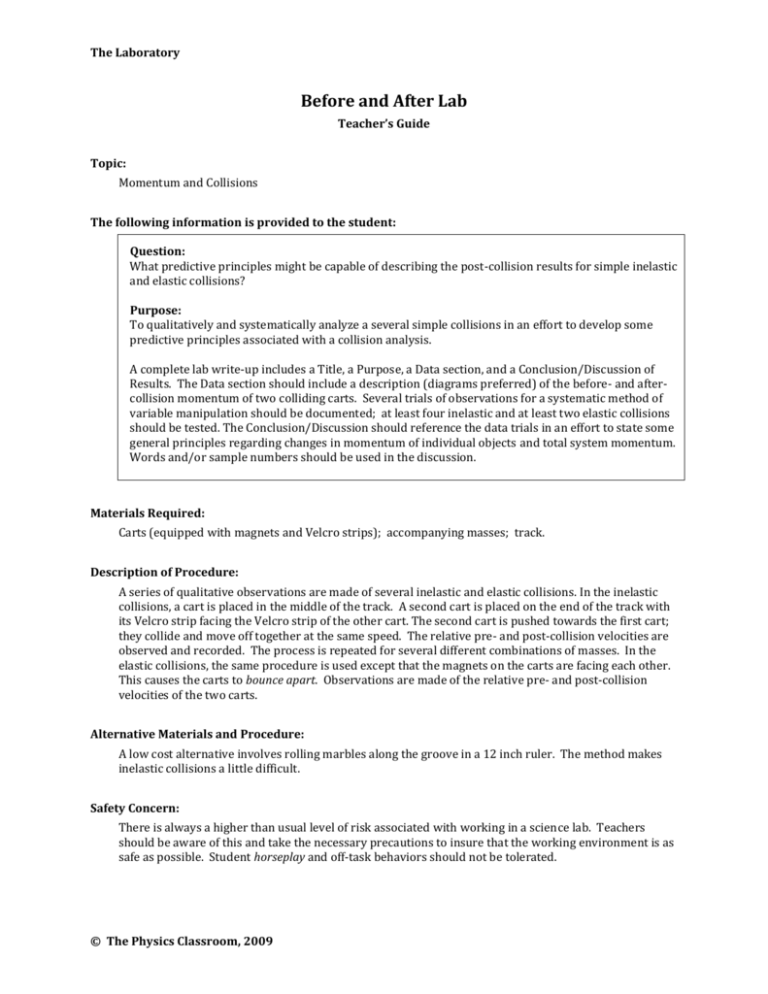
The Laboratory Before and After Lab Teacher’s Guide Topic: Momentum and Collisions The following information is provided to the student: Question: What predictive principles might be capable of describing the post-collision results for simple inelastic and elastic collisions? Purpose: To qualitatively and systematically analyze a several simple collisions in an effort to develop some predictive principles associated with a collision analysis. A complete lab write-up includes a Title, a Purpose, a Data section, and a Conclusion/Discussion of Results. The Data section should include a description (diagrams preferred) of the before- and aftercollision momentum of two colliding carts. Several trials of observations for a systematic method of variable manipulation should be documented; at least four inelastic and at least two elastic collisions should be tested. The Conclusion/Discussion should reference the data trials in an effort to state some general principles regarding changes in momentum of individual objects and total system momentum. Words and/or sample numbers should be used in the discussion. Materials Required: Carts (equipped with magnets and Velcro strips); accompanying masses; track. Description of Procedure: A series of qualitative observations are made of several inelastic and elastic collisions. In the inelastic collisions, a cart is placed in the middle of the track. A second cart is placed on the end of the track with its Velcro strip facing the Velcro strip of the other cart. The second cart is pushed towards the first cart; they collide and move off together at the same speed. The relative pre- and post-collision velocities are observed and recorded. The process is repeated for several different combinations of masses. In the elastic collisions, the same procedure is used except that the magnets on the carts are facing each other. This causes the carts to bounce apart. Observations are made of the relative pre- and post-collision velocities of the two carts. Alternative Materials and Procedure: A low cost alternative involves rolling marbles along the groove in a 12 inch ruler. The method makes inelastic collisions a little difficult. Safety Concern: There is always a higher than usual level of risk associated with working in a science lab. Teachers should be aware of this and take the necessary precautions to insure that the working environment is as safe as possible. Student horseplay and off-task behaviors should not be tolerated. © The Physics Classroom, 2009 The Laboratory Suggestions, Precautions, Notes: 1. 2. 3. 4. 5. Pasco Scientific is one of several companies which sells low-friction carts equipped with magnets (for elastic collisions), velcro strips (for inelastic collisions), additional masses and a mass tray. These are ideal for collision studies and other mechanics labs. Their lowest cost model is ME-6950. To lengthen the lifetime of the carts, remind students to roll the carts at very low speeds. Also remind students that your ears still work and are able to hear carts bouncing off the track and onto the table. Also remind students that you are the one who ultimately assigns them their grade in the course. Pre- and post-collision mass and velocity information can be represented using diagrams. The carts can be drawn as rectangles (with wheels, if desired); accompanying masses can be depicted by drawing taller rectangles. The velocity can be represented by arrows; the length of the arrow is proportional to the magnitude of the velocity; the direction of the arrow points in the direction which the cart is moving. Once a comfort level is established with the procedure and the observations, students should be encouraged to conduct some observations of collisions in which both carts are initially in motion and moving towards each other (or even in the same direction). The main objective of this lab is to introduce students to the idea that one object loses momentum in a collision and the other object gains momentum AND that the distribution of mass among objects effects the relative amount of velocity change. More quantitative conclusions can be left for subsequent labs. Auxiliary Materials: None Scoring Rubric: M4. Before and After Lab Included, labeled and organized all parts of the lab report. Data section includes a well-documented record of the results of several trials using mass values and velocity vector diagrams (or some comparably effective representation). The mass and the relative before- and aftercollision velocities should be depicted. At least four inelastic and at least two elastic collisions are represented. Conclusion/Discussion suggests some principles capable of predicting the results of a collision. Specific evidence from the Data section is used to support the conclusions. Conclusion is detailed enough to be used in the analysis of a collision; sample numbers might have been used to provide the necessary details. Connections to The Physics Classroom Tutorial: The following readings are a suitable accompaniment to this lab: http://www.physicsclassroom.com/Class/momentum/u4l2a.cfm http://www.physicsclassroom.com/Class/momentum/u4l2b.cfm Connections to Minds on Physics Internet Modules: Sublevel 5 of the Momentum and Collisions module is a suitable accompaniment to this lab: http://www.physicsclassroom.com/mop/module.cfm © The Physics Classroom, 2009 Score _____/_____ The Laboratory © The Physics Classroom, 2009
